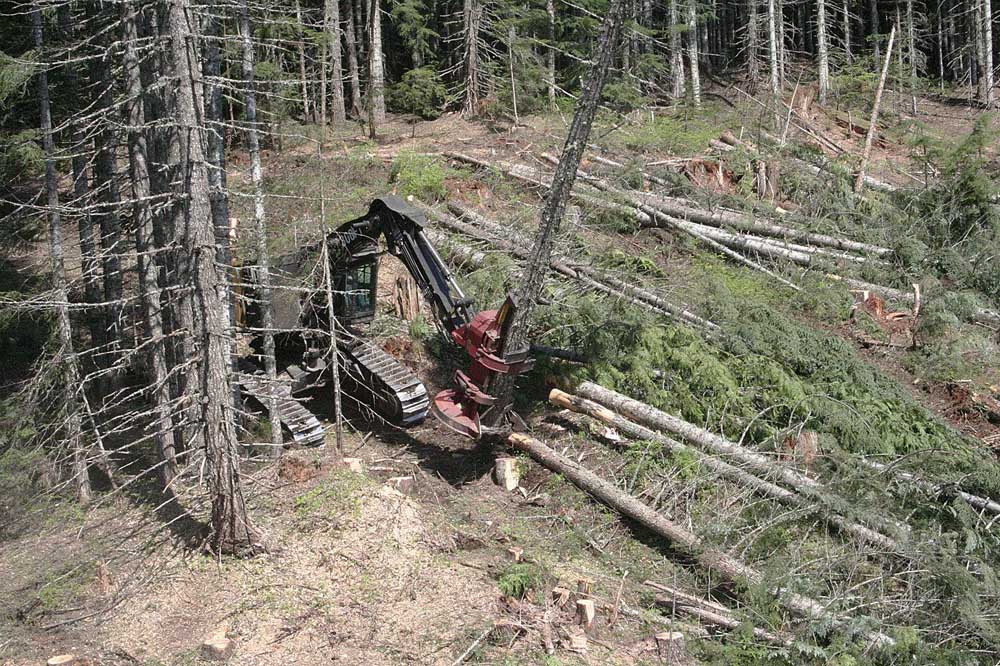Recreation impacts debated in logging lawsuit
Published 8:13 pm Sunday, September 8, 2019

- Oregon’s Board of Forestry has voted to proceed with a habitat conservation plan analysis opposed by the timber industry.
EUGENE — Environmentalists want a 100-acre Oregon logging project overhauled to better accommodate recreational users, arguing that existing federal plans will degrade scenic qualities and increase fire risks.
The U.S. Bureau of Land Management is so intent on an “aggressive commercial logging project” in an area slated for hiking and biking trails that it violated federal environmental law to approve the plan, said Nick Cady, attorney for the Cascadia Wildlands and Oregon Wild nonprofits.
The agency has other alternatives to clearcutting the timber sale next to the Thurston Hills Natural Area that would reduce visual impacts for recreational users, Cady said during oral arguments in Eugene on Thursday.
“They could have thinned over this entire area instead of regeneration harvest,” he said. “They need to analyze and harmonize logging with all these recreational values.”
By trying to conceal information about heightened fire hazards from the project, which is near Springfield, the BLM also failed to have a full public discussion about its consequences, as required by the National Environmental Policy Act, Cady said.
“It defies all logic for the BLM to conduct this type of logging in this area that’s surrounded by residences,” he said. “When the BLM attempts to hide damaging information about fire risk, that is where the agency violates NEPA.”
Earlier this year, the environmental groups filed a complaint asking a federal judge to overturn the government’s plan and block logging, which is expected to begin in early October.
Although the federal government officially designated a 1,000-acre “Willamalane” recreational area as part of a broader 2016 resource management plan for 1.3 million acres of BLM property in Oregon, the agency now claims it can ignore the impacts of logging on hikers and bikers, Cady said.
Buffer zones
The BLM is refusing to consider logging-free buffer zones around trails and other alternatives that would serve recreation, fuel reduction and timber harvest, he said. “This is textbook unreasonable agency behavior and a violation of NEPA.”
About 75% of the trails within the recreation area will be built along riparian or retention zones where logging isn’t slated to occur, countered John Tustin, an attorney for the BLM.
The BLM did take a “hard look” at environmental impacts under NEPA but doesn’t have to adopt the aesthetic preferences of the plaintiffs when analyzing the project, Tustin said.
Designating trails and buffer zones before the logging project is complete would complicate the project. “It makes sense from an economic and operational aspect to do the harvest first, before people enter the area,” he said.
The project is on Oregon & California Railroad Revested Lands — known as O&C Lands — where sustained-yield timber production is prioritized over other uses such as recreation, Tustin said.
Even so, the BLM sought to minimize adverse impacts on recreation by planning to change logging roads into trails and retaining 15% of the trees, he said. “Here the project maximized the retention allowed under the resource management plan,” he said.
Trees older than 70 years are significantly overrepresented in the project area, which interferes with BLM’s mission of providing a sustained yield of timber by planting new trees, he said. For that reason, a regeneration harvest is preferable to thinning.
“They’re being proactive to move forward and readjust the age class distribution,” Tustin said. “Thinning does not adjust the age class distribution.”
The agency also properly considered fire risk effects from the logging project and concluded the impacts across the region would be minimal due to the “checkerboard” pattern of BLM land ownership, which is interspersed with private properties, he said.
Slash from the logging project will be removed and burned in a controlled manner to reduce risks, and trails will improve access for emergency vehicles, Tustin said.
Such site-specific factors were considered, as is mandated under NEPA, he said. “It’s not whether the agency considered every conceivable effect.”
Fire hazards were already extensively studied in the region and were referenced in the specific plans for the 100-acre project, Tustin said.
“Our position is you don’t need to repeat that analysis because you’ve already done it,” he said. “It was never hidden from the public.”
Fast-growing trees
Logging in the project area will make for a “dynamic, changing landscape” of fast-growing trees that won’t resemble a traditional clearcut project, said Lawson Fite, an attorney for the Seneca Sawmill Co., which is buying the timber and intervened in the lawsuit.
“It’s not going to be the equivalent of a parking lot or a sidewalk,” he said. “It’s a different kind of work in the woods.”
Increasing the amount of timber cut from the project area with a regeneration harvest instead of thinning is also important to Seneca, said Sara Ghafouri, an attorney for the company. “It helps inform their operational plan of where they’re going to get timber.”
At the conclusion of the hearing, U.S. District Judge Michael McShane said he’d try to issue a preliminary order in the case before the expected harvest operations begin.





